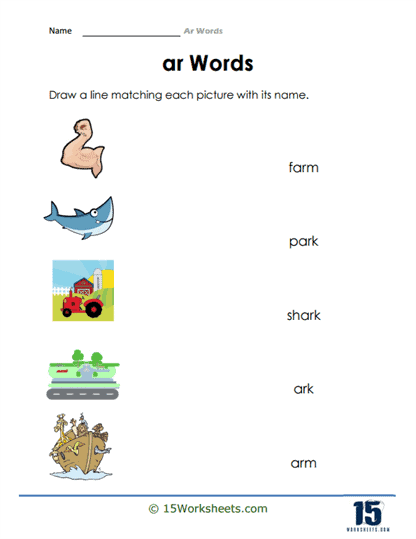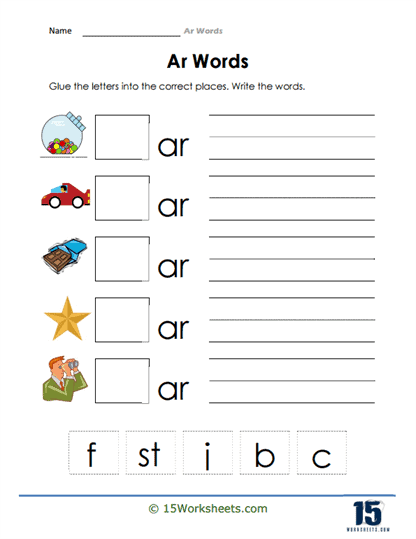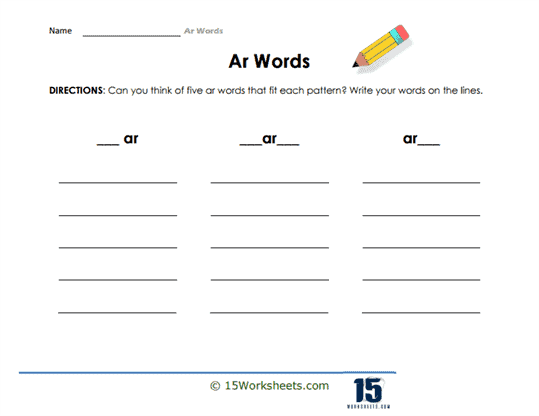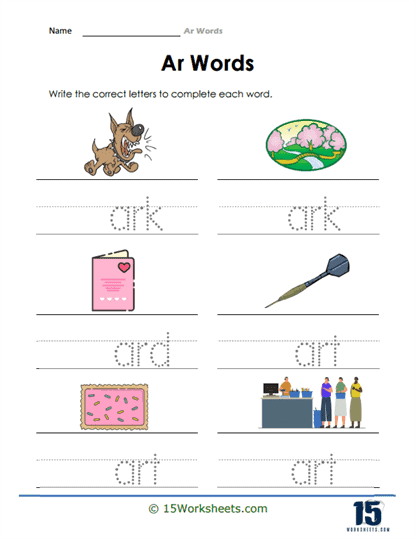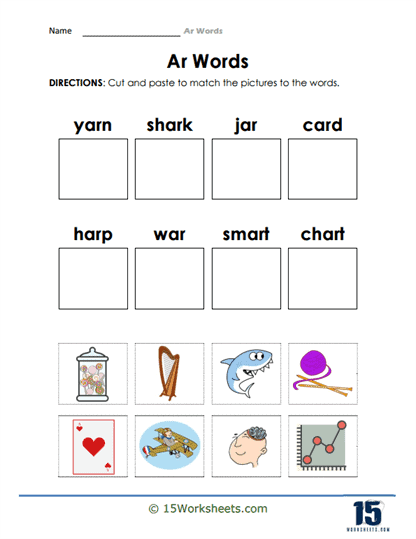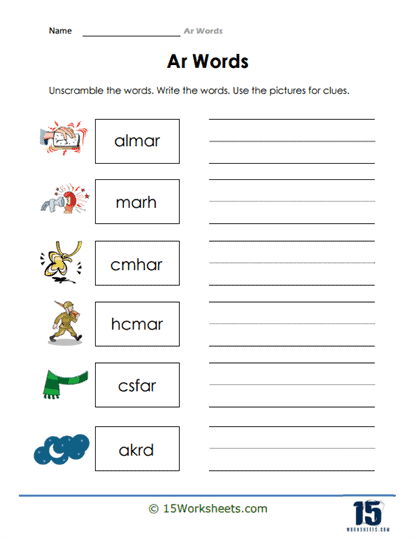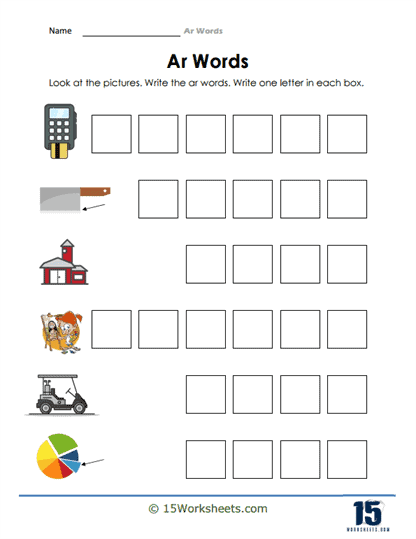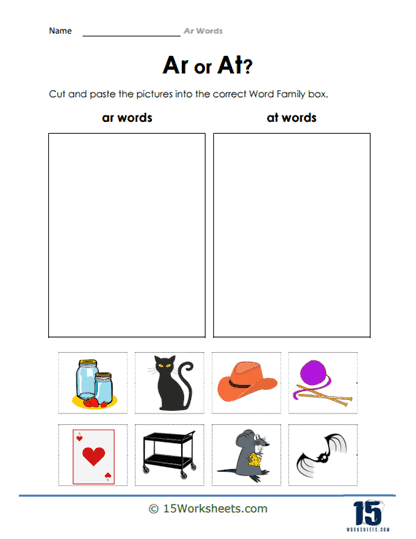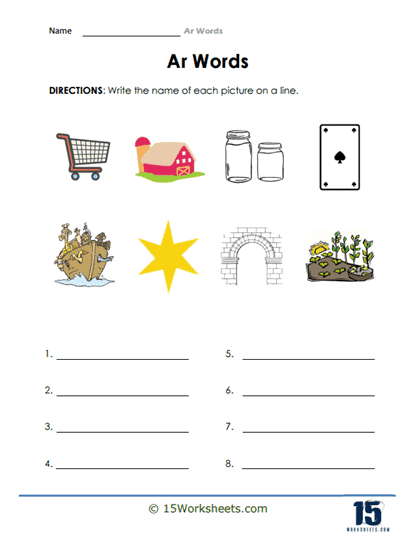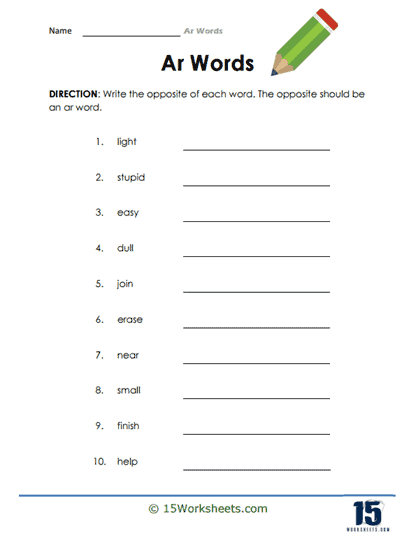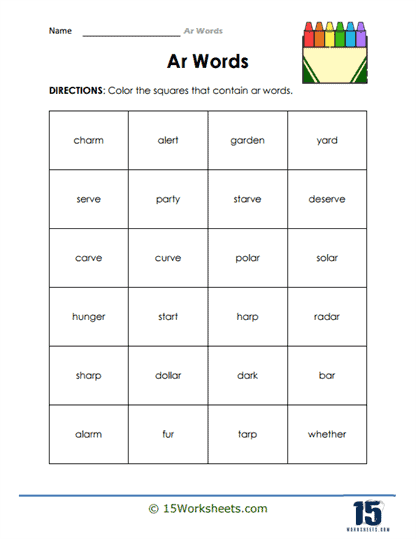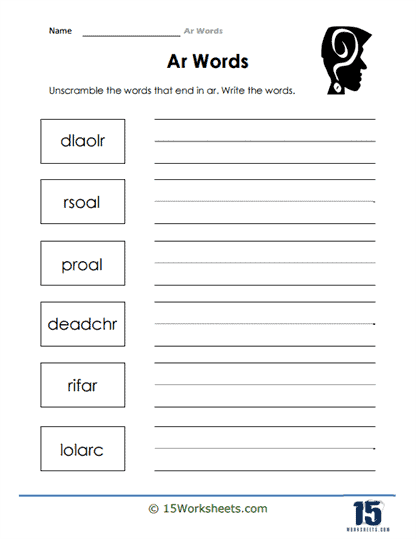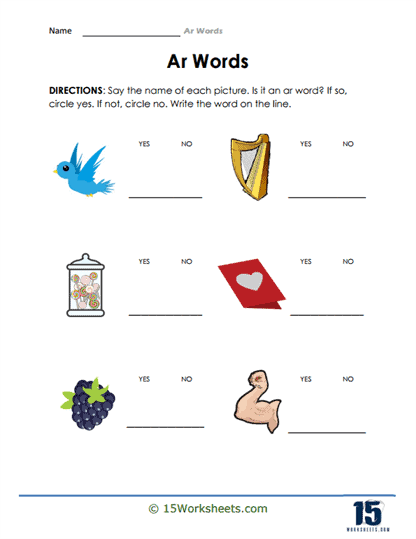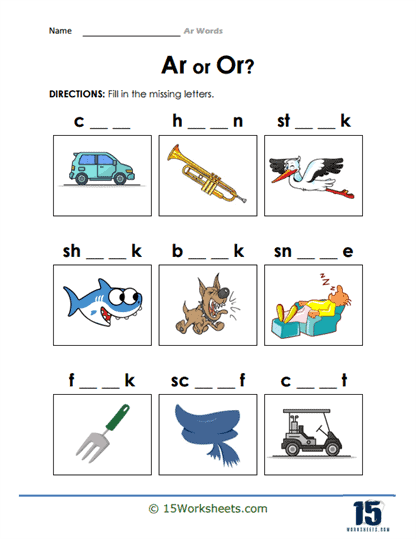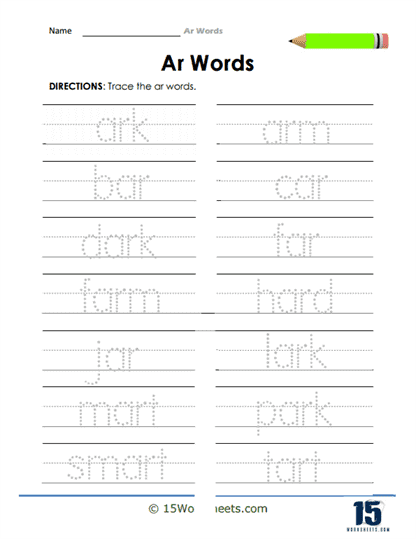ar Words Worksheets
All About These 15 Worksheets
This comprehensive series of 15 meticulously crafted worksheets is designed to take students on an engaging and immersive journey into mastering words with the -ar- sound. By providing a variety of dynamic exercises, these worksheets aim to not only help students recognize the -ar- sound but also strengthen their ability to spell, categorize, and use these words in meaningful contexts. Each worksheet is a step forward in reinforcing their phonetic understanding and practical application, fostering language skills that are crucial for literacy development.
At the heart of these worksheets lies a strategic focus on blending auditory recognition with visual learning. In one exercise, students are tasked with matching pictures to the correct -ar- words. This exercise challenges them to form mental connections between images and sounds, cultivating their vocabulary while enhancing visual recognition skills. As they carefully analyze the pictures and think about the corresponding words, students are actively engaged in a process that deepens their understanding of how words function and what they represent in the world around them.
In another activity, students are invited to physically interact with language by gluing missing letters onto pictures that represent -ar- words. This hands-on approach not only reinforces spelling skills but also encourages kinesthetic learning—a powerful tool for many young learners. As students work through this exercise, they gain an intuitive understanding of spelling patterns, learning to distinguish between subtle variations of the -ar- sound. They are not simply filling in blanks; they are grasping the fundamental rules that govern word construction.
One of the key strengths of this series is its focus on the diversity of the -ar- sound. Students are guided through exercises that require them to list and identify different -ar- patterns, such as words that start with “ar-” or include “-ar-” in the middle. This exploration helps students recognize that while the -ar- sound may be consistent, the spelling patterns can vary. Such awareness is crucial in developing a flexible approach to language, equipping students with the tools they need to decode new words and expand their vocabulary beyond rote memorization.
Students must add the missing letters to -ar- words using pictures as clues. This activity not only tests their knowledge of word structures but also hones their ability to draw on context to determine meaning. The ability to use context clues is a vital reading skill, as it allows students to decipher unfamiliar words based on their surroundings. By incorporating pictures, these worksheets make the learning process both engaging and effective, turning abstract concepts into tangible learning experiences.
One of the more challenging yet rewarding exercises asks students to unscramble letters to form -ar- words, again using pictures as context clues. This task pushes them to think critically and solve problems creatively. As they rearrange the letters and test different combinations, they are developing a deeper, more active relationship with language—learning not just what words are, but how they can be constructed and deconstructed. Such skills are foundational for both reading fluency and writing proficiency.
To sharpen their phonetic awareness, students are also challenged to distinguish between similar-sounding words, specifically those with -ar- and -at- sounds. This exercise fosters auditory discrimination, helping students become more attuned to subtle differences in sound that can change the meaning of a word. By engaging in this type of comparison, students strengthen their listening skills, a critical component of both effective communication and literacy development.
The worksheet series includes a collection of exercises where students are asked to write the opposite of specific words, using variations of -ar- words. This task requires students to engage in higher-level thinking, as they must not only recall vocabulary but also consider relationships between words, such as antonyms. It offers a deeper layer of learning, as students must actively engage with the language rather than passively absorb it, encouraging critical thinking and creativity.
In a fun twist, students must identify whether certain pictures represent -ar- words or not. This exercise challenges them to apply their newfound knowledge in real-time, distinguishing between what fits the pattern and what does not. It’s an excellent way to assess their understanding and give them the confidence to make independent judgments about language.
What Are -ar- Words?
Language is a complex and beautiful system of patterns, sounds, and meanings, and one way to unlock its secrets is by understanding phonetic combinations like “AR” words. These words typically contain the letters “ar,” which form a distinct sound when pronounced. In American English, the sound is often represented as /ar/, as in the word “car,” while in British English, it may be closer to an elongated /a:/ sound. While this might seem like a small detail, grasping these nuances can greatly improve language learners’ pronunciation and fluency.
Recognizing words with the “ar” letter combination is not just about learning how to pronounce them; it’s also about discovering patterns that make language more predictable and easier to master. For example, many “ar” words like “star” or “far” share common sounds that can help learners build confidence when speaking. By focusing on similar word groups, students can sharpen their listening skills and better identify pronunciation rules in real time, which in turn leads to more fluid and natural speech.
Here’s a brief list of commonly used “ar” words:
- Car
- Star
- Far
- Bar
- Jar
- Scar
- Snarl
- Large
- Hard
- Market
While these words might seem simple at first glance, they are foundational to everyday conversation and writing. Each one plays a unique role in how we express ourselves, from nouns like “car” and “market” to verbs like “snarl” or adjectives like “large” and “hard.” What’s interesting is that while these words share a similar spelling pattern, their meanings and grammatical functions vary greatly. This diversity showcases the richness of language and reminds us that even small letter combinations can be remarkably versatile.
One key point to remember is that not all words containing “ar” will follow the same pronunciation rules. The way these letters are pronounced can shift depending on the word’s origin, the surrounding letters, or regional accents. For example, the word “market” may have a slightly softer or different vowel sound than “car,” and in some dialects, “scar” might sound more clipped. These shifts in pronunciation can be subtle, but they’re crucial for developing a more refined ear for the language.

